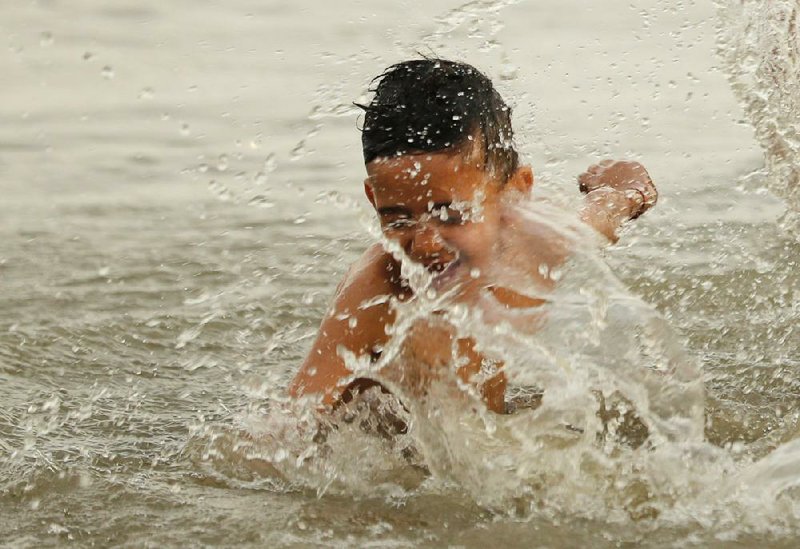NEW DELHI -- As if the coronavirus wasn't enough, India grappled with scorching weather and the worst locust invasion in decades as authorities prepared for the end of a monthslong lockdown.
The heat wave threatens to compound challenges of containing the virus, which has started spreading more quickly and broadly since the government began easing restrictions of one of the world's most stringent lockdowns earlier this month.
"The world will not get a chance to breathe anymore. The ferocity of crises are increasing, and they're not going to be spaced out," said Sunita Narain of New Delhi's Center for Science and Environment.
When her 6-year-old son woke up with a parched throat and a fever, housekeeper Kalista Ekka wanted to take him to the hospital. But facing a deluge of covid-19 patients, the doctor advised Ekka to keep him at home despite high temperatures in the family's two-room apartment in a low-income neighborhood in South Delhi.
[CORONAVIRUS: Click here for our complete coverage » arkansasonline.com/coronavirus]
"The fan only makes it hotter but we can't open the window because it has no screen," and thus no defense against malaria- and dengue-carrying mosquitoes, Ekka said.
In a nearby upmarket enclave crowded with walkers and joggers every morning and at dusk -- some with face coverings, some without -- neighbors debated the merits of masks in an online forum.
In the heat, "it is very dangerous to work out with a mask. So a Catch-22 situation," said Asmita Singh.
Temperatures soared to 118 degrees Fahrenheit in the capital New Delhi this week, marking the warmest May day in 18 years, and 122 degrees in the desert state of Rajasthan, after the world's hottest April on record.
India suffers from severe water shortages and tens of millions lack running water and air conditioning, leaving many to seek relief under shady trees in public parks and stepwells, the ancient structures used to harvest rainwater.
[Gallery not loading above? Click here for more photos » arkansasonline.com/529india/]
Cyclone Amphan, a superstorm that crossed the unusually warm Bay of Bengal last week, sucked up huge amounts of moisture, leaving dry, hot winds to form a heat wave over parts of central and northern India.
At the same time, swarms of desert locusts have devastated crops in India's heartland, threatening an already vulnerable region that is struggling with the economic cost of the lockdown.
K.L. Gurjar, a top official of India's Locust Warning Organization, said his 50-person team was scrambling to stop the swarms before breeding can take place during India's monsoons, which begin in July. Otherwise, he said, the locusts could destroy India's summer crops.
Meanwhile, India reported another record single-day jump of more than 6,500 coronavirus cases on Thursday, pushing up the total to over 165,000 confirmed cases and more than 4,700 deaths.
Prime Minister Narendra Modi's government is preparing a new set of guidelines to be issued this weekend.
A Section on 05/29/2020
